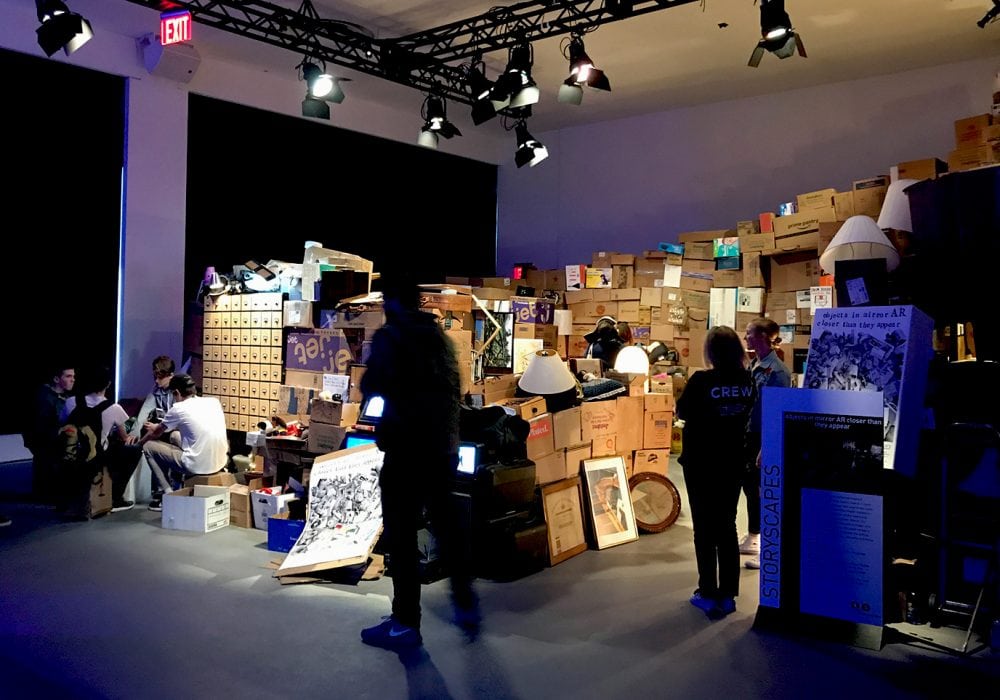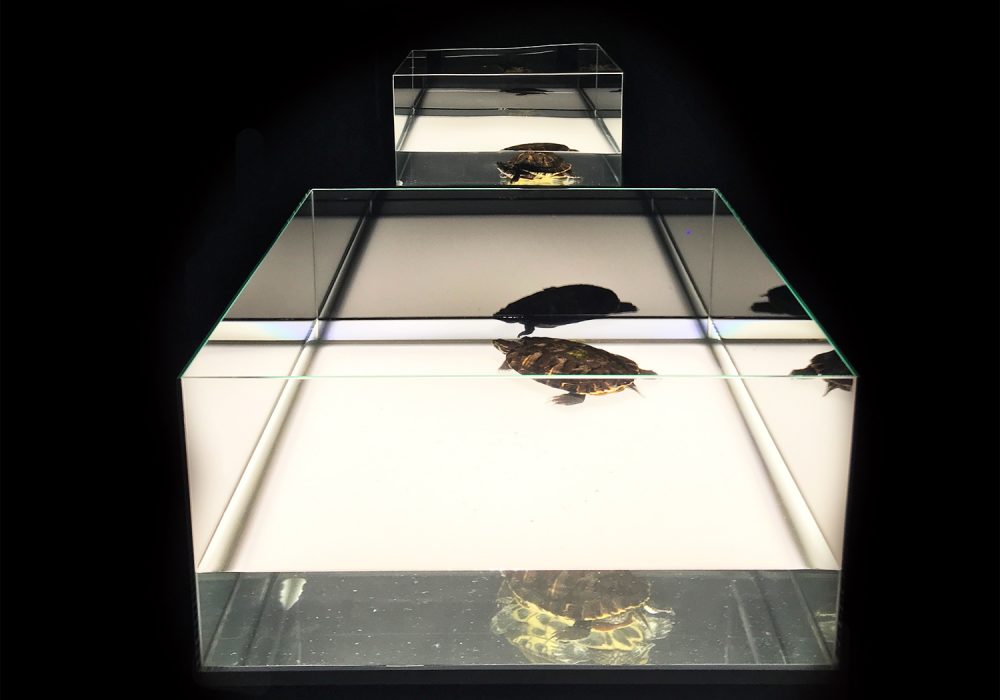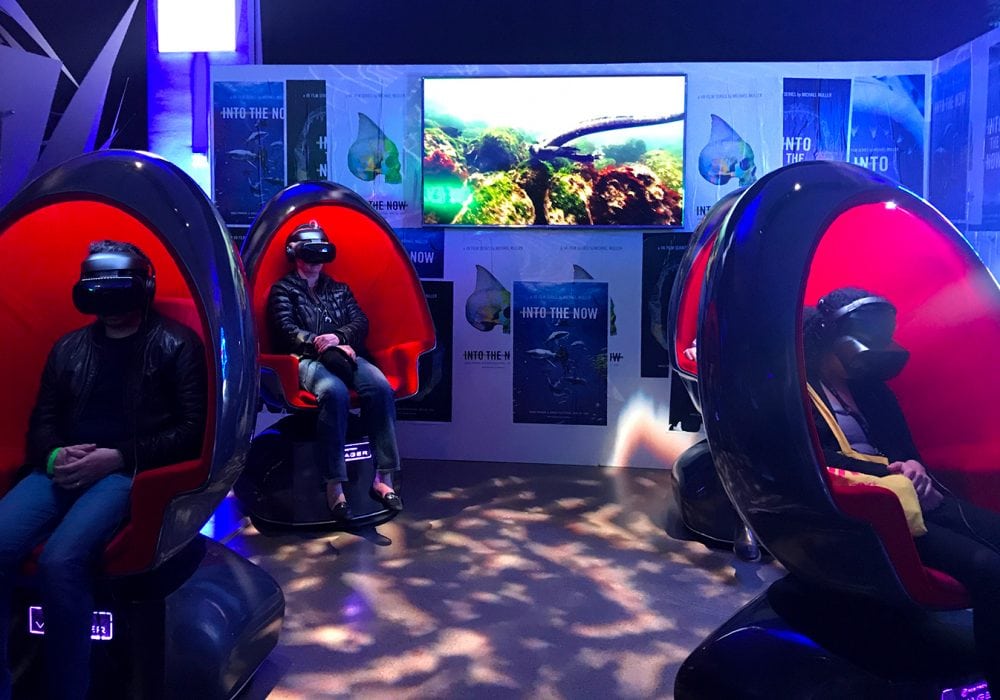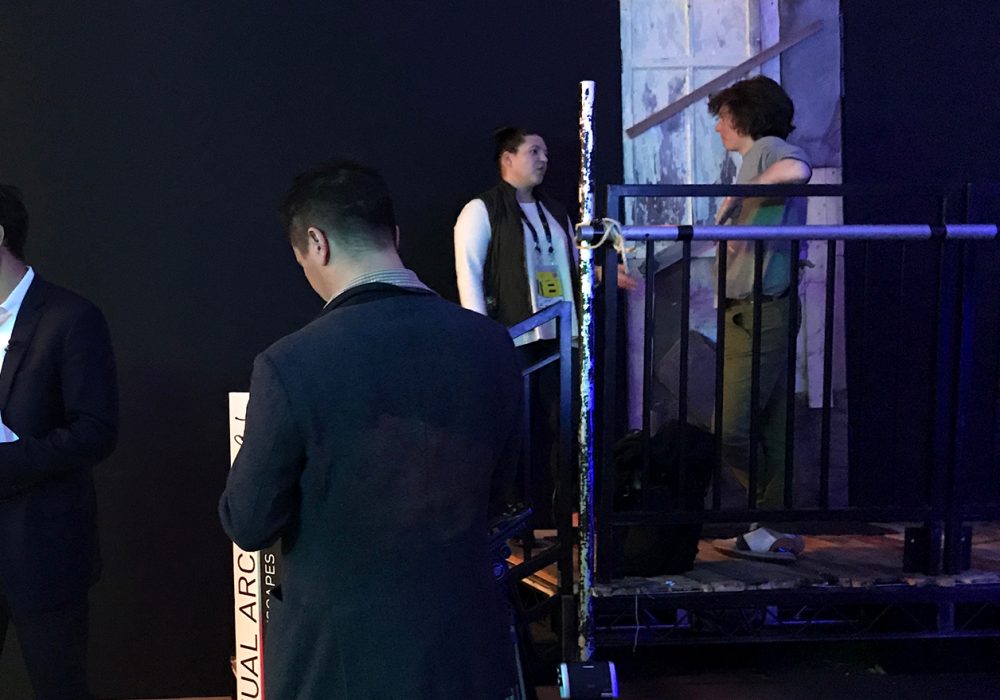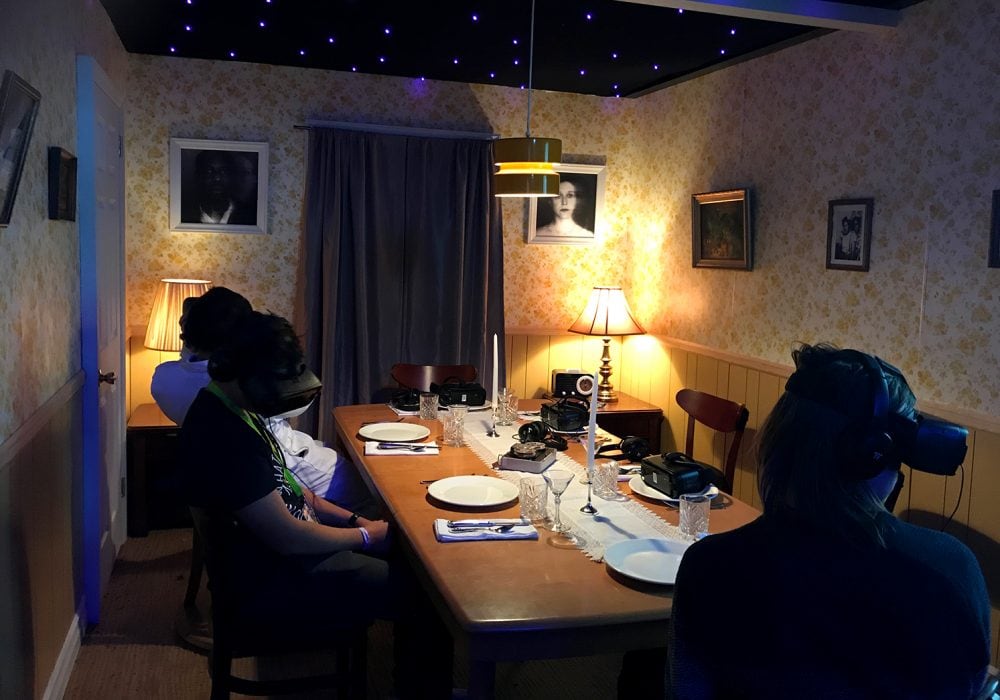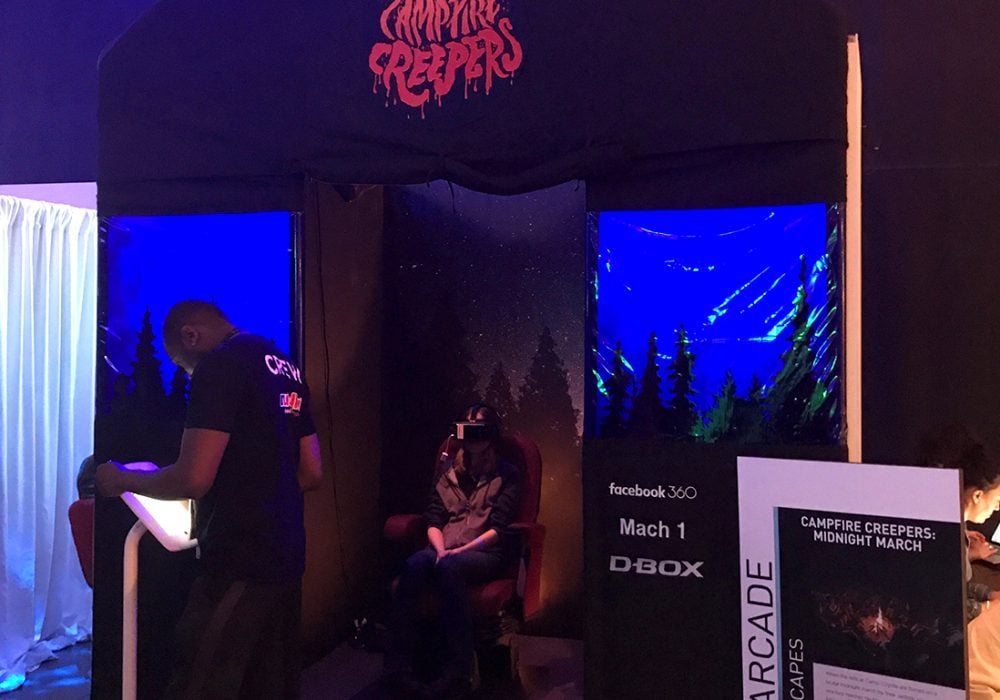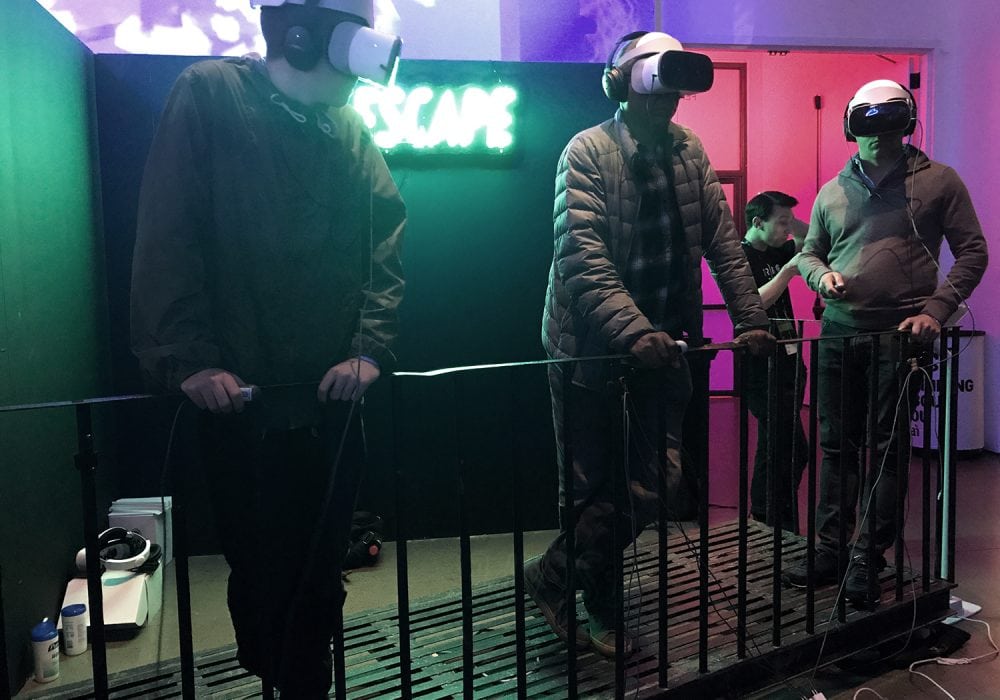Does it not sound like a battle cry? TriBeeeCaaa! Tribeca, here I come! Those familiar with me will know that, when it comes to film festivals, I am not squeamish in the slightest. Sleep deprivation, long waiting lines, no time for food or drink– count me in! The Tribeca Film Festival marked my first overseas event, and it came with the ambitious goal of sampling every single experience found in the virtual reality exhibit. How did I do? See for yourself.
The Big Race
I’m taking a beeline straight through Manhattan, surrounded by all the pictures that come to mind at the mention of “New York City”: yellow cabs, rushed business people, skyscrapers, crosswalks, brick walls… One of the uncurtained window facades reveals the “Immersive” grounds of the Tribeca festival. Already, half a dozen people have formed a line, even though the exhibit will not open to audiences for another 45 minutes. I join their ranks, and together we shiver in the cold New York wind.
I had purchased my tickets weeks in advance. Along with about a hundred films, the Tribeca Film Festival also showcases a diverse selection of virtual reality exposés – most of which are world premieres. Of the 291 entrants, only 27 experiences made the cut for the exhibition hall, known as the Virtual Arcade. To see – nay, experience them – you need a ticket for a fixed timeframe of three hours. One ticket gets you three hours of VR.
It’s 12 on the dot, and things get going. One by one, we have our tickets scanned and receive colorful bracelets in return. With the bracelets on, the neat row scatters immediately, as the only thing on our minds now is to run! Run to the elevator, squeak inside (close to the door, preferably), out of the elevator, run some more. Wait for a moment, run again, then into the arcade we go. No regard for the slow. I am flabbergasted upon arrival. The dark, tight space is jampacked with curious installations. A neatly set festive table, huge piles of boxes, the prerequisite American flag hanging somewhere, and a low drone emanating from somewhere deep inside. Every experience comes with a stand holding an iPad, which I use to register myself on each respective wait list. Then, await the SMS that says “You’re on in 5 minutes. Hurry!”
All-in, it cost me five tickets, a lot of waiting, and a healthy dose of doggedness. Though this took a lot of dedication, I would not have made it without the wonderful Virtual Arcade team’s help: yes, I managed to see all 27 experiences! Thank you, thank you! I might be one of the few people who can actually claim this achievement – apart from the curator of course.
Tribeca 2018: the Experiences
What an exceptional selection. I don’t think I have to tell you that I was absolutely thrilled. Looking back the experience, the thing that impressed me most must be the sheer breadth of experiences – both technically and thematically. Of all the great experiences I had, I would like to show you those that impressed me the most, of which there were many. This is part one of my Tribeca Best Of:
The Most Innovative
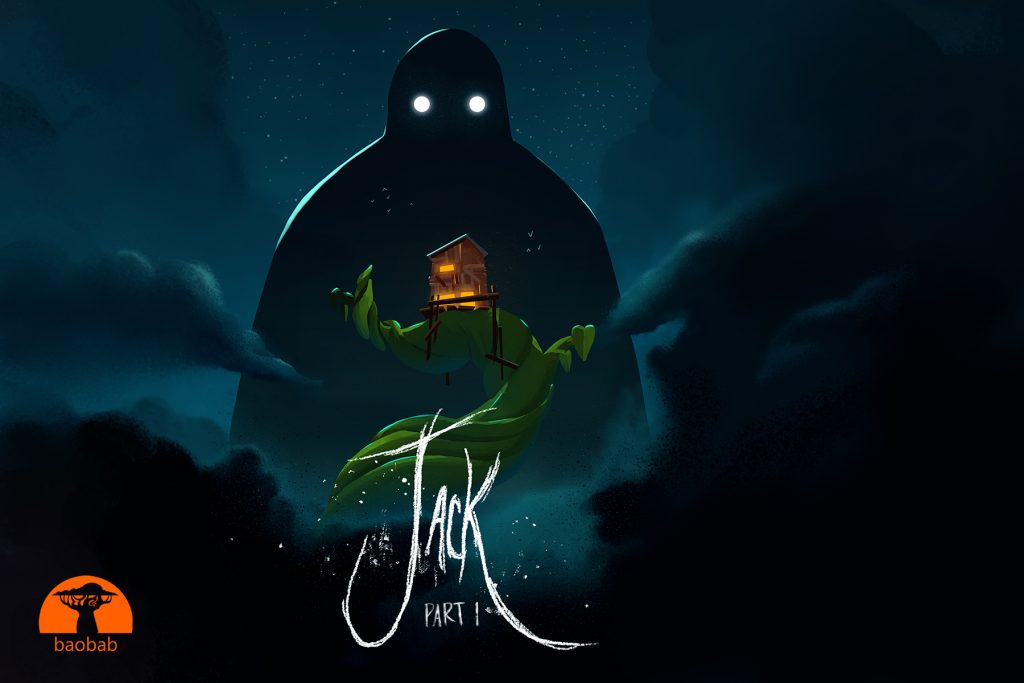
This won’t come as a surprise for those who had the chance to see Tribeca Immersive’s program – yes, it was Jack: Part One. This turned out to be the source of the uncanny drone and clatter I heard earlier. This experience came into being as a collaboration between two veritable savants, Baobab Studios and Mathias Chelebourg.
This payed off, as Jack turned out to be this year’s big attraction. And the door that led to Jack’s world might have been the best-guarded door in all of New York. After numerous futile attempts, I was allowed to finally pass thanks to a personal intercession by the organizational team. I entered a small room with a shaky stool in the center and a mattress by a wall next to a cast-iron stove upon which a water kettle had been placed. I banged my head on a lightbulb hanging from the ceiling – indeed, it was all real! Translated into virtual reality via tracking tech. I was about to take a seat on the bed when suddenly, a large green frog appeared, shouting at me. It was my “mother,” I myself was Jack. She did exactly what mothers tend to do, pushing a broom into my hands and making me sweep the entire house. As resistance seemed futile, I complied. Then, something incredible happened: “My mother” and I, Jack, started talking to each other. Although I had read about it previously, it hit me out of the blue; the stark awareness of not being alone in the room. Facing me was an actress who, thanks to a motion capture suit and multiple cameras, appeared in my goggles as Mrs. Frog. Before letting off me a couple minutes later, she gave me another task. I was to sell her valuable radio in order to scratch together some money for food. Not long after, a flying merchant stopped by my door – a dubious raven commanding a ride not unlike a pirate ship. “Hey little guy,” he cawed, and offered a trade: my radio for a magic bean. Initially, I wouldn’t hand over the radio – could I not carry it around with me wherever I went and press all of the buttons! Nevertheless, the merchant shoved the soccer ball-sized bean into my hands. What a smell, so fresh and green! I accepted. I still ask myself what might have happened had I refused the deal. Would the exposé have had an alternative ending up its sleeve? Or would I have been coerced into accepting no matter what? My mother returned, furious about my barter. She threw the bean out of the window, and something miraculous happened. The bean sprouted, an audible drone started, and things began shaking – soon enough, we found our little house sitting atop a gigantic beanstalk that had shot up from the ground in a matter of seconds. That was the end; to be continued.
Admittedly, this was not an entirely novel idea. Last year’s iteration of the Tribeca festival featured a similar setup in Draw Me Close (which unfortunately I did not attend). Even if Jack does not reinvent the wheel, the experience set a new benchmark for interactivity. Nothing beats communication with a flesh-and-blood person in terms of naturality – artificial intelligence or not. Jack demonstrates just how immersive VR can be when executed with technical and narrational perfection; how magical and stirring it can be. For me, these kinds of projects light the way for location-based virtual reality. Here, VR departs from the world of film, moving towards immersive theater instead.
On another note, CNET captured the “behind the goggles” of Jack. The motion capture body suit that transformed the actress into the frog mother in virtual reality is especially interesting. Also, take a look at the army of helping hands:
The Most Beautiful Films
Those who have seen the brilliant animated film Allumette (available for free for the HTC Vive and Oculus Rift via Steam or the Oculus store) will already be familiar with the works of Penrose Studios. Together with Baobab, they currently represent the nonplus ultra in the world of animated VR films. The first iteration of Arden’s Wake was shown at last year’s Tribeca festival. This year, they followed up with an extended version, called: Arden’s Wake: Tide’s Fall.
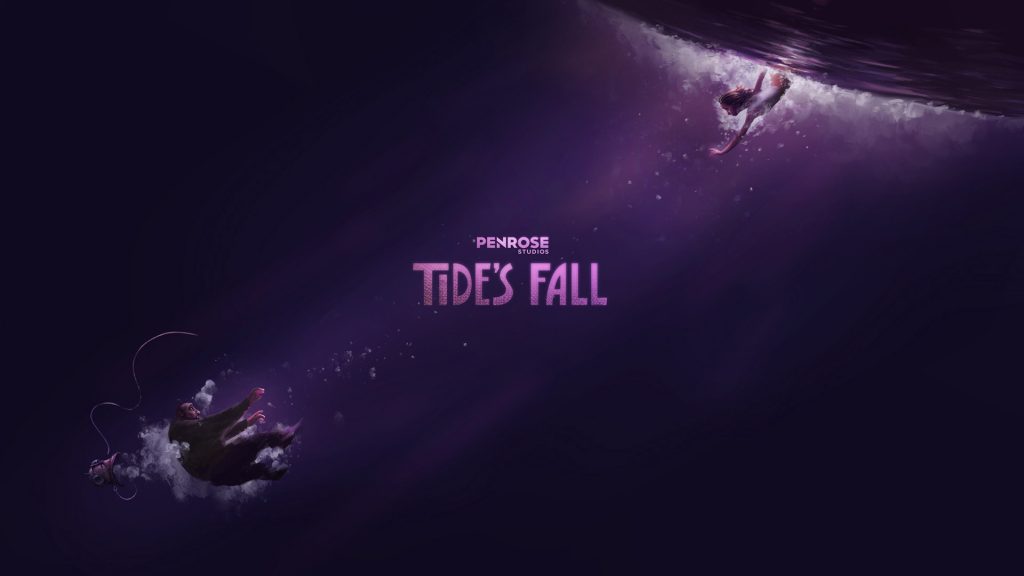
In the span of thirty minutes, I felt myself torn between bottomless grief, cheerful giggling, nail-biting tension, and absolute horror. An experience unto itself. Alice Vikander, who played the wonderful Ava in Ex Machina, voices the part of Meena, who leads the spectator through her world which has been almost completely submerged in water. Together with her father, she lives in a little house just above sea level. When one day, Meena’s father does not return from his dive, she courageously grabs his submarine and sets off into the depths – taking us with her! Penrose Studios’ narrative style is based on worlds not bigger than a dollhouse. Spectators assume a passive role: invisible, but free to roam the world; and able to view the characters and what is happening from up close or far away, from atop or from below, or even to stand right in the middle of it all. Depending on whether one chooses to stay in the house, in front of it, or even underwater, one can experience various takes of the same, linearly told story.
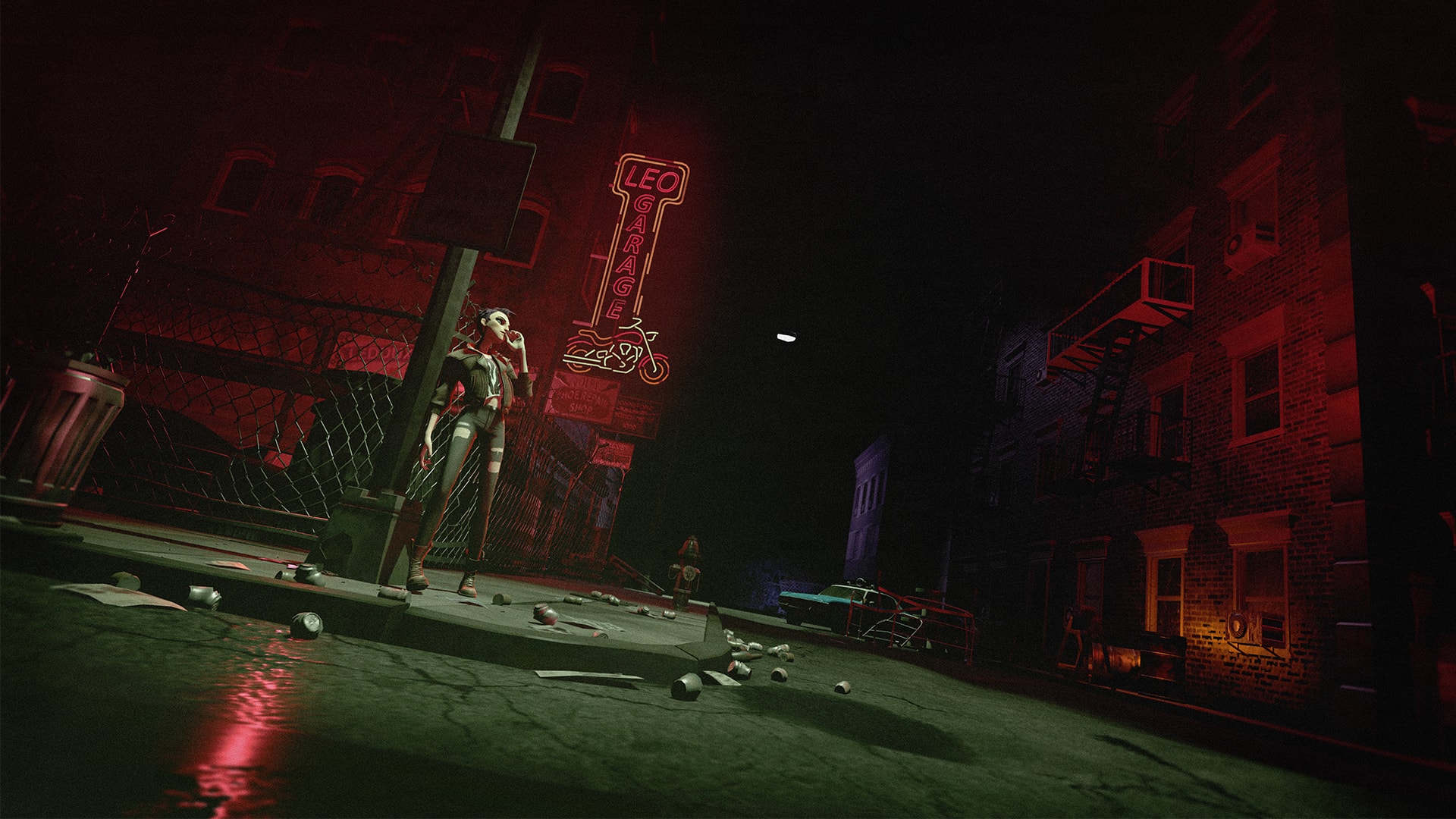
Penrose used the same narrative technique set in dollhouse dimensions for their film BattleScar. Yet they added so much! Like Tide’s Fall, BattleScar is an animated film revolving around young women, but at only a third of the length. Although this title only comes third here, for me, it was the best VR film of this year’s Tribeca festival – if one discounts the installations for a moment. The story recounts the adventures of outcasts Debbie and Lupe, who explore 70s New York and its bustling music scene upon their release from prison, where they met. Lupe, a 16 year-old with Puerto Rican roots and voiced by Rosario Dawson, leads the spectator through the film, which at once also becomes a film about identity and the question of what home is. Unlike Tide’s Fall, BattleScar frequently escapes the miniature world and places the spectator in the middle of different scenes (though they do not assume a role themselves). These shifts prove effective, as the spectator cannot just retreat to the comforts of being a godlike observer with an omniscient view from overhead. The film also pursues a unique way of dealing with textual elements: as Lupe keeps a diary, excerpts from said diary appear in the viewer’s field of vision every couple of seconds. The film embodies pure punk. The ephemeral texts emphasize especially important sentences as they are uttered – confirming one of my theories that in VR, what is heard must at once be experienced to foster immersion. BattleScar may exaggerate this idea in parts, but recovers and impresses with masterfully executed scene changes. Using spotlights, backdrops turning towards the spectator from the dark, and transitions zooming through the 3D pages of Lupe’s diary, the directors Nico Casavecchia and Martin Allais create a veritable rollercoaster of light, rhythm, and music. The sudden ending is upsetting though – I want more! Luckily, it looks like further continuations are in the pipeline. BattleScar was produced by Atlas V and a number of partners, including ARTE. This makes me hopeful that you too might be able to see the film sometime soon.
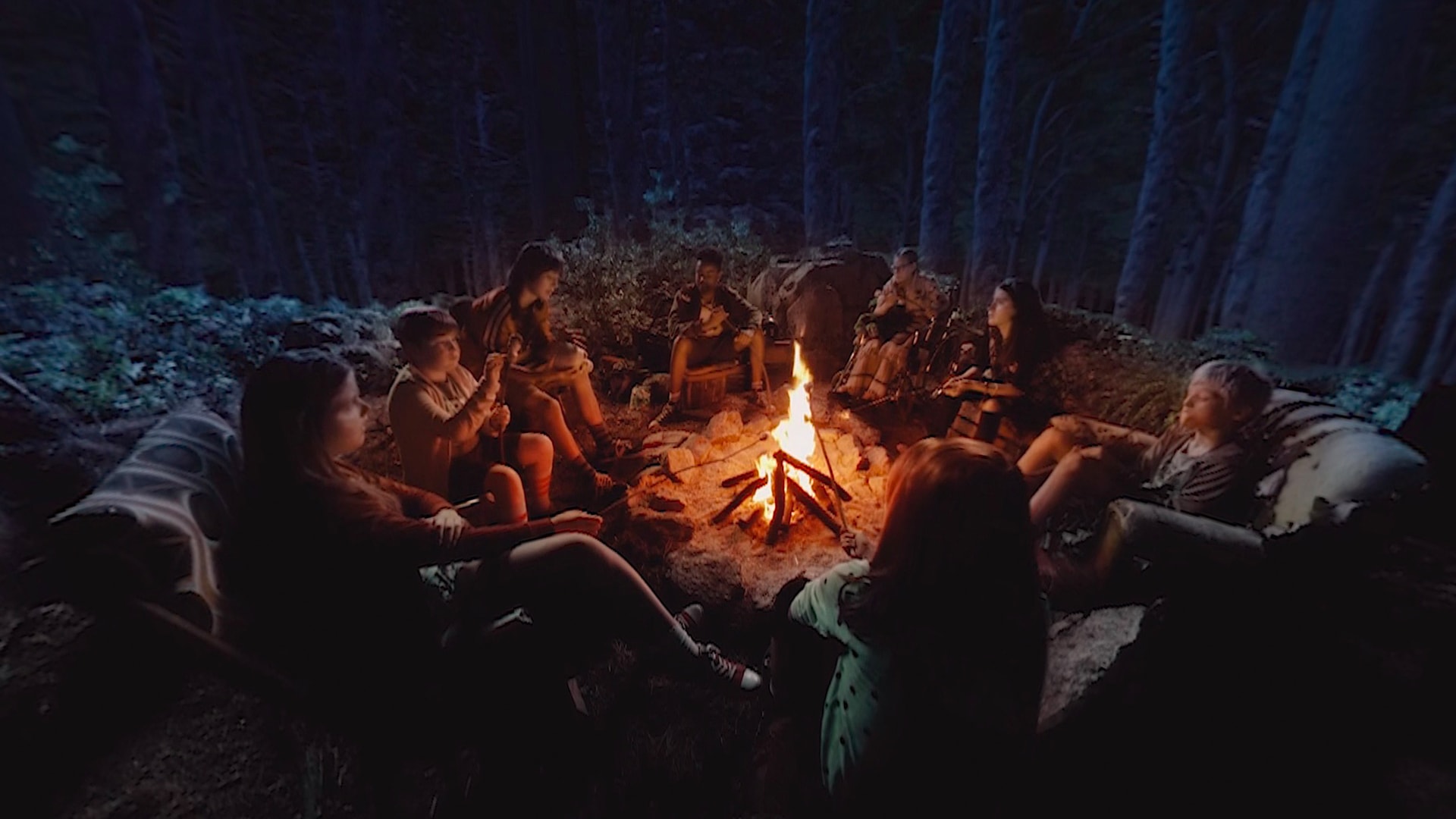
Another entrant to the film section worth mentioning should be Campfire Creepers: Midnight March. Devoted followers of my blog will know of my disdain for horror. Nevertheless, I dared to venture inside – after all, I had a goal to reach! While the film might not be particularly innovative, its execution is excellent. Eschewing animation, and instead shot in gripping stereoscopic live action, the film tells the story of a couple of kids roasting marshmallows and sharing horror stories with each other while sitting around a campfire in the forest at night. So far, so typical. According to the press material, the film pays homage to the horror flicks of the 70s and 80s. This whole ordeal is definitely not “cute,” despite what a Tribeca staff member assured me of, in what I think was an attempt to calm me. The director Alexandre Aja comments “My goal was to craft a rollercoaster ride of twists and scares that will have you jumping back in fright – and then laughing at yourself once you’ve taken the headset off.” The former goal certainly came true, though I’m still waiting for the latter promise to take place for me.
Midnight March is the second episode of a mini series currently comprising two episodes. Although the first episode was shown at Tribeca, I haven’t seen it as it was not located in the Virtual Arcade, but rather in the horror section of the 360-degree cinema. Now that was too much for me. Those of you who own a VR headset can, however, experience it for yourself as, on the 27th of April, both episodes were released to the Dark Corner app, which can be downloaded through the Oculus store or directly via Samsung Gear or Daydream (options for Cardboard can be found here).
The second part of my Tribeca experiences revolves around changes of perspective, breaking boundaries, and self-experiences! Read it in full length here.
Translated by Jan Mc Greal


